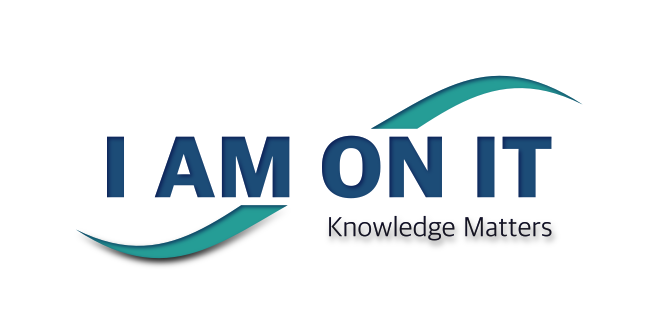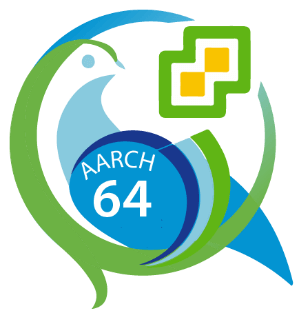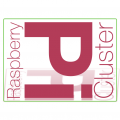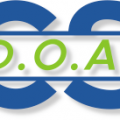I think it was to the end of VMworld 2018 when I first read about ESXi on Arm.
Blogposts on ESXi on Arm
- https://www.virtuallyghetto.com/2018/11/esxi-on-a-raspberry-pi.html
- https://vinfrastructure.it/2018/11/vmware-esxi-on-raspberry-pi/
Unfortunately, at this time, it was only available VMware internally.
For VMworld 2019, the topic of ESXi on Arm appeared again. This time, as a VMware employee, I wanted to know and understand more. But the image was not available to everyone.
Now, with VMworld 2020 in the books, ESXi on Arm is available as Fling!
Download this newly released Fling!
“ESXi Arm Edition”We’d like to give our customers a chance to evaluate this tech in their own environments and understand what features you will find most valuable and how you would want to deploy this technology.https://t.co/0zEsvSGYZu
— Flings Office of the CTO (@vmwflings) October 6, 2020
Now finally, time to dust off my Raspberry Pi 4b.
My Raspberry Pi 4b
- 4 GB memory
- Samsung FIT Plus 32GB Typ-A 400 MB/s USB 3.1 Flash Drive (OS)
- Samsung FIT Plus 256GB Typ-A 400 MB/s USB 3.1 Flash Drive (Datastore)
- SanDisk Extreme microSDHC 32GB
Get started
First, download the ISO file for ESXi on Arm Fling. You need a My VMware (https://my.vmware.com) account. If don’t have one yet, you can register for free. It takes only a few minutes to do so.
Next, download both pdf files – ESXi-Arm-Fling-Doc and Fling-on-Raspberry-Pi. The ESXi-Arm team has created easy to follow, step-by-step instructions.
Installation
My VMware colleague Nico Vilbert wrote a tutorial, adding photos for some of the step-by-step instructions.
Challenges
After the installation, I realized that the host did not show any storage, even though a 256 GB USB stick was attached. When searching for help (manually attach USB device as VMFS datastore in ESXi), I found an instruction on Virten.net.
Followed each step of the instructions, and it works.
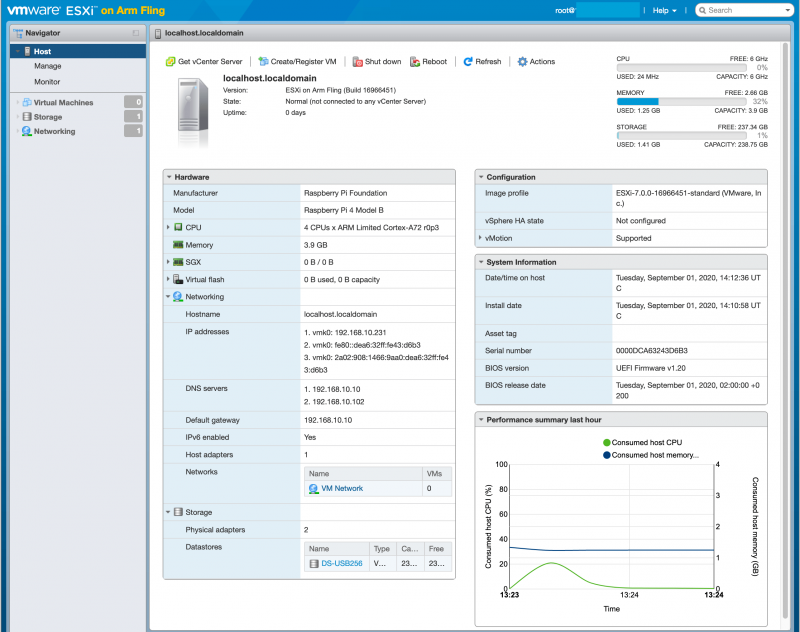
Next challenge. The scratch partition had to be added manually. I found the How-to within the VMware documentation for vSphere 7.
If you want to hear more about ESXi on Arm Fling – you can listen to episode 173 of Virtually Speaking podcast.
Feedback
The team behind the fling is very interested in feedback on ESXi-Arm.
Here are few ways to engage with them
- Twitter: @esxi_arm
- ESXi-Arm Blog: https://blogs.vmware.com/arm
- Slack: #esxi-arm-fling on VMware {code}
- For other inquiries or engaging with ESXi on ARM Product Team, please send an email to esxionarm@vmware.com
They want feedback to understand how the fling can be used. The feedback will help to prioritize future plans.
So please give the ESXi-Arm Fling a try today and let us know what you think!
Additional Information
I did not stick to my own words. When writing a post, I wanted to make sure everyone can follow and understand the post.
So, here are some additional information which should help to understand.
ESXi on Arm
ESXi or more specific VMware ESXi is the first part.
VMware ESXi (formerly ESX) is an enterprise-class, type-1 hypervisor developed by VMware for deploying and serving virtual computers. As a type-1 hypervisor, ESXi is not a software application that is installed on an operating system (OS); instead, it includes and integrates vital OS components, such as a kernel.
…
The name ESX originated as an abbreviation of Elastic Sky X. In September 2004, the replacement for ESX was internally called VMvisor, but later changed to ESXi (as the “i” in ESXi stood for “integrated”).
Source: Wikipedia
The second part is Arm.
ARM (previously an acronym for Advanced RISC Machine and originally Acorn RISC Machine) is a family of reduced instruction set computing (RISC) architectures for computer processors, configured for various environments. Arm Holdings develops the architecture and licenses it to other companies, who design their own products that implement one of those architectures—including systems-on-chips (SoC) and systems-on-modules (SoM) that incorporate memory, interfaces, radios, etc. It also designs cores that implement this instruction set and licenses these designs to a number of companies that incorporate those core designs into their own products.
Source: Wikipedia
In short, ESXi on Arm is VMware’s hypervisor running on Arm Architecture.
More on ESXi on Arm
- Twitter: https://twitter.com/esxi_arm
- Blog: https://blogs.vmware.com/arm
Flings
Flings are apps and tools built by our engineers and community that are intended to be explored.
Source: Flings web site
I hope the added information gives the full picture of ESXi on Arm.
October 23, 2020 – Version 1.1 available
Version 1.1 of the ESXi on Arm fling is already available!
Very important note: An upgrade from 1.0 to 1.1. is not possible or supported.
Please follow the instructions given in the ESXi on Arm blog.
